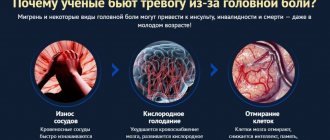Weakness and headache are very common symptoms that can occur in many conditions and diseases. Sometimes they only say that it is necessary to change their lifestyle, for example, adjust their diet or get more rest. But in some cases, these manifestations may indicate serious diseases, including rare ones.
For example, fatigue along with progressive muscle weakness are symptoms of Pompe disease. This is a rare hereditary disease that can occur at any age. In Pompe disease, due to a genetic mutation, the level of the enzyme alpha-glucosidase decreases, which leads to the accumulation of glycogen in tissues. Cardiac and skeletal muscle damage is most severe in the infantile form and skeletal muscle is predominant in Late-onset Pompe disease1.
The disease is manifested by a constantly progressive decrease in muscle tone. Muscle weakness may be accompanied by general fatigue, exercise intolerance, headache, cardiac dysfunction, shortness of breath, including when lying on your back. Due to a decrease in muscle tone, posture is disrupted - lumbar lordosis develops2.
However, the likelihood of developing Pompe disease is very low - the disease is extremely rare. In the vast majority of cases, weakness and headache are associated with more common diseases and conditions. Let's look at the most common reasons.
Common causes of weakness and headaches
Migraine is a pathology included in the list of diseases of global importance and burden for humanity. It affects about 12% of people worldwide. Migraine symptoms are not a sign of any disease. A migraine attack is characterized by unilateral localization of the headache, a pulsating nature, increased pain during exercise, nausea and/or vomiting, and increased sensitivity to light and/or sounds. In addition, weakness and fatigue may develop during an attack3.
Anemia is a condition in which the number of red blood cells (erythrocytes) and hemoglobin, which carries oxygen, is reduced. Anemia can have many causes, with iron deficiency leading the way4. Deficiency of this important mineral can develop due to a decrease in its supply (for example, with an unbalanced diet), impaired absorption, or increased losses (for example, with bleeding)5.
Signs of iron deficiency anemia5:
- weakness;
- headache, dizziness;
- poor tolerance to physical activity;
- decreased appetite;
- decreased performance, intellectual capabilities;
- pallor of the skin and mucous membranes;
- heartbeat and others.
Fibromyalgia is another condition that can cause headaches and weakness. They are accompanied by a complex of other symptoms: muscle soreness and stiffness, which increase with fatigue and overload. Along with them, digestion and sleep disorders may occur, anxiety, tension appear, concentration of attention decreases, etc. The causes of fibromyalgia are not known with certainty. It is assumed that the likelihood of its development increases with emotional stress, certain infections, and sleep disturbances6.
Respiratory viral infection (ARVI - flu or cold) is a very common cause of weakness and headache. As a rule, they are accompanied by a complex of symptoms: increased body temperature (from slight to severe), runny nose, cough, sore throat7.
Depression is one of the most common psychiatric diseases.
This is a painful condition with a characteristic feeling of melancholy, depression, despair, mental and motor retardation. With depression, a person may experience fatigue, headache, sleep disturbances, decreased appetite, sometimes cardiovascular symptoms (heart pain), and so on8.
Headache
Headaches – pain in any part of the head, which can be “shooting”, pulsating, dull, can occur suddenly and last for a different time. There are many diseases, one of the manifestations of which may be a headache, but in most cases, headaches are not a symptom of a serious disorder. Pain in the head occurs as a result of irritation of the sensitive nerve endings of blood vessels, meninges, skin and muscles of the head. The brain and spinal cord itself do not have their own pain nerve endings.
Headaches are primary and secondary. In primary cases, there is no brain damage (for example, tension headaches - occurring in response to stress, migraines). Secondary headaches are a manifestation of brain diseases (vascular, inflammatory, tumors).
Synonyms Russian
Cephalgia, cranialgia.
English synonyms
Сephalalgia, cranialgia.
Symptoms
Headaches can spread over the entire surface of the head, or they can affect one specific area.
The nature of headaches is:
- pulsating,
- pressing,
- sharp, shooting,
- dull, aching,
- bursting.
Head pain may be accompanied by the following symptoms:
- general weakness,
- dizziness,
- loss of consciousness,
- nausea, vomiting,
- increase in body temperature,
- changes in breathing, pulse, blood pressure,
- weakness in the muscles of the arms or legs.
Who is at risk?
- Often experiencing stress, emotional, and physical strain.
- Suffering from depression.
- Staying in one body position for a long time.
- Those who eat poorly.
- People whose sleep duration is insufficient.
- Alcohol and smoking abusers.
- Suffering from chronic infectious diseases.
general information
Headaches can have many causes. By origin they are primary and secondary. Primary ones occur in the absence of brain damage and are caused by functional, biochemical changes, and the reaction of brain vessels. Primary pains include the following.
- Migraine headaches (migraines) are intense unilateral pains of a pulsating nature. More common in women. During a migraine attack, increased sensitivity to light and sounds develops. Such pain is provoked by stress, overexertion, alcoholic beverages, and hormonal changes in women. The duration of the attack is from several minutes to several hours.
- Tension headaches occur as a result of mental stress. They are one of the forms of headaches that arise from muscle tension in the scalp, face, and neck, which can occur during stressful situations. Headaches have a squeezing, squeezing character. Usually quite intense, but short-lived. They go away after a person relaxes and gets out of a stressful situation.
- Cluster headaches are intense, burning pain in the eye area that can spread to the temple and cheek. Accompanied by redness of the face, nasal congestion, and watery eyes. Occurs predominantly in men. Attacks of pain last from several minutes to several hours. One of the reasons is considered to be dilation of blood vessels in response to the release of certain substances by the brain. Most often they are between the ages of 20 and 40.
Secondary headaches are caused by diseases of the brain. These include...
- Stroke is a disease in which the blood supply to the brain is disrupted. It develops as a result of rupture of a cerebral vessel and hemorrhage (hemorrhagic stroke), as well as due to blockage of a vessel (ischemic stroke).
- Brain tumors.
- A brain abscess is a localized area of purulent inflammation of the brain.
- Traumatic intracranial hemorrhage - as a result of severe head trauma, hemorrhage forms in the brain, which requires surgical treatment.
- Encephalitis, meningitis - inflammation of the brain and its membranes.
- High blood pressure.
- Trigeminal neuralgia is intense pain in the face, spreading to the eye, upper and lower jaw.
- Glaucoma is a disease that develops due to increased intraocular pressure. Accompanied by intense pain in the eye area, headaches, and blurred vision.
Thus, in many cases, secondary headaches are one of the symptoms of a serious brain disease, so a detailed examination of the patient and treatment in a hospital are required.
Diagnostics
The scope of diagnostic measures for headache depends on the specific clinical situation. There are many studies that allow us to examine the structures of the brain and identify its diseases.
- Magnetic resonance imaging (MRI) allows you to detect tumors, areas of circulatory disorders in the brain, inflammatory processes, etc. The study is based on the effect of a magnetic field on body tissue. After computer processing of the received signals, layer-by-layer images of human tissue are formed. The method is highly informative.
- Computed tomography is an x-ray research method. It is based on reducing the intensity of X-ray radiation when passing through human tissues of varying density, resulting in images of the internal structures of the body. It is used to diagnose various diseases of both the brain and other organs.
- Computed tomography and magnetic resonance angiography are used to obtain images of blood vessels. In the brain, they can detect aneurysms (dilation of the vessel wall) and other changes in the vascular system.
Laboratory diagnostic methods include cerebrospinal fluid and blood tests.
- Analysis of the cerebrospinal fluid (CSF), which bathes the brain and spinal cord. When they become ill, the amount of protein, sugar, cells in the cerebrospinal fluid, etc. changes in the composition of the cerebrospinal fluid. The study of the composition of the cerebrospinal fluid and its pressure is a valuable diagnostic method.
- A complete blood count is a widely used test. Helps in identifying inflammatory processes, anemia and some other conditions that may be accompanied by headaches.
Treatment
A neurologist often treats patients with headaches. Depending on the causes of pain, drugs of various groups are prescribed.
If a brain lesion (for example, a tumor) is identified, surgical treatment may be required.
Prevention
Prevention of headaches involves eliminating the factors that provoke their occurrence. You should avoid overwork, frequent stressful situations, eat regularly, follow a sleep schedule, exercise, try to move more, and do not abuse alcohol.
Recommended tests
- Total protein in liquor
- Glucose in cerebrospinal fluid
- Clinical blood test (with leukocyte formula)
What else could be causing the symptoms?
Weakness and headache can be manifestations of a number of physiological (i.e. normal) and pathological conditions.
Dehydration is a condition that occurs when fluid loss exceeds fluid intake, for example, with diarrhea and vomiting. A lack of fluid in the body is indicated by thirst, a feeling of restlessness, loss of strength, weakness, lack of urination, decreased blood pressure and increased pulse, as well as cool and damp extremities 9.
Taking certain medications —headache and weakness can be side effects of many medications, including diuretics, antihypertensives, and others10.
Menstruation - hormonal changes that occur on the eve of and during menstruation can contribute to headaches and weakness. In 25-90% of women (according to various sources), premenstrual syndrome occurs 2-10 days before the start of menstruation. This is a complex of symptoms indicating cyclic neuropsychic, vascular, metabolic and hormonal disorders10.
PMS has about 150 symptoms that can occur in different combinations. More often, women experience increased fatigue, engorgement and tenderness of the mammary glands, bloating, nausea, drowsiness, back and lower back pain, and headache11.
Causes of headaches
The main goal of diagnosis is to determine the cause of pain. It can be caused by vascular spasm, inflammation, and even the spread of infection. In women, pain may also be associated with hormonal imbalance, as well as individual characteristics. According to statistics, it is women who often suffer from sudden migraine attacks, as well as from prolonged headaches that appear due to changing weather or other changes. The cause of this symptom cannot be determined at home, but during the consultation it is important to notify the doctor how often the pain appears, what it is associated with and in what areas it is localized.
Migraine
Migraine is a headache that occurs unexpectedly and is characterized by moderate to high intensity. More often it is located only in one half of the head and has a paroxysmal character. The duration of one attack can range from 2 hours to 3 or more days, and it is difficult to eliminate even with medication.
Headache is not the only symptom of migraine. It may also present with the following symptoms:
- nausea and deterioration of health;
- intolerance to bright light and loud sounds;
- dizziness.
Migraines most often occur in women between the ages of 25 and 35, but can occur periodically throughout life. A hereditary predisposition has been proven, as well as a relationship with head injuries.
Tension headache
Headaches in women can develop with prolonged mental or emotional stress. Another reason is prolonged stay in an uncomfortable position, which causes spasm of the neck muscles. The pain is aching and there is a feeling of squeezing of the head. It extends to its entire surface or to individual lobes, most often the occipital and parietal. This symptom occurs periodically in most of the population and does not pose a significant danger.
Tension headaches are not very intense. It is accompanied by fatigue, loss of appetite, and sometimes nausea and dizziness. There are two types of it: episodic and chronic. In the first case, it lasts no more than 180 days a year, in the second, it can last 5 days in a row or more. Chronic headache is a reason to contact specialists at the Clinical Brain Institute for consultation and diagnosis, even if it is easily relieved with painkillers.
Cluster pain
Cluster headaches in women are very rare. They occur more often in the male population, and their prevalence does not exceed 1-3 cases per 1000 people. They are very sharp and appear in attacks, each of which lasts no more than 30-60 minutes. However, several such attacks can be observed per day, which significantly affects the quality of life and reduces performance. Clinical manifestations of cluster pain are clearly expressed:
- acute unilateral attack of neurological pain;
- redness of the conjunctiva of the eyes and lacrimation, as well as nasal discharge;
- localization - the temporal lobe of the head and the area behind the eyes;
- redness of the facial skin, also one-sided.
Cluster pain does not respond to standard analgesics, and resolution of the attack occurs abruptly. Treatment consists of prescribing potent drugs (verapamil, lithium compounds and others), which can only be taken with the permission of a doctor, and to relieve an attack - triptans or dihydroergotamine. It is not possible to get rid of pain at home, and the reasons for its occurrence are not fully understood.
Sinus headaches in women
One of the causes of headaches in women is inflammation of the sinuses (sinusitis or sinusitis). The process begins when an infection enters the natural cavities of the head in combination with a decrease in the level of immune defense; it can be caused by hypothermia or viral diseases. It occurs with the development of inflammation and accumulation of exudate in the sinuses. It can be serous or purulent, accompanied by acute pain and deterioration in well-being.
Sinusitis is a chronic disease prone to relapse. It is an infectious inflammation of the maxillary or maxillary sinus. The disease can be identified by its characteristic symptoms:
- recurrent course, exacerbations more often occur in the cold season;
- pain that is localized in the frontal lobe of the head can spread to its entire surface;
- increased pain when the head is tilted sharply down is one of the diagnostic methods at home;
- difficulty breathing through the nose, the appearance of discharge that may contain impurities of pus or blood;
- lacrimation, inflammation of the conjunctiva of the eyes.
Another type of sinus headache is frontal sinusitis, inflammation of the frontal sinus. The patient experiences a feeling of compression of the head in the front part, which affects the sense of smell and nasal breathing. Relief occurs after the use of vasoconstrictor drugs, which reduce the amount of effusion into the cavity of the frontal sinus. Systemic analgesics are also recommended.
Infectious diseases
Bilateral headache, which is accompanied by fever, general weakness, inflammation of the mucous membranes, and nasal discharge, often occurs as one of the symptoms of infectious diseases. In most cases, these are respiratory viral infections, flu or colds - they periodically develop in representatives of any gender and age, more often in the off-season or cold season. The process is associated with the vulnerability of the body with a decrease in immune defense and subsequent activation of pathogenic microflora. Treatment consists of taking antipyretics and vitamins, proper nutrition and rest.
A more severe form of infectious pathology, which manifests itself as headaches, is meningitis. The disease occurs with inflammation of the brain and requires urgent hospitalization. The pain is sharp, throbbing, and may be accompanied by vomiting and blurred vision. One of the symptoms of meningitis is an increase in temperature to 37.5-38 degrees, and it is difficult to reduce it with antipyretic drugs.
Injuries and their consequences
Open and closed craniocerebral injuries, violations of the integrity of the cervical spine can manifest as headaches even long after the injury. Symptoms often worsen due to changing weather conditions, as well as during physical exertion and emotional stress. A concussion can result from a fall even on a soft surface, and its main symptoms are nausea, blurred vision, vomiting and fever. Treatment may vary depending on the nature and severity of the injury. Doctors at the Clinical Brain Institute strongly recommend that you undergo an examination if alarming symptoms appear after a fall, and treatment can be carried out both in a hospital and at home. In mild cases, bed rest and plenty of fluid intake are sufficient.
Nervous symptoms
Headache may be the result of inflammation of the trigeminal nerve. It provides sensitivity to the mucous membranes of the mouth and nose, and also participates in the motor activity of the masticatory muscles. Pain with trigeminal neuritis can spread to the entire surface of the head, and is especially intensified when talking or eating. It is sharp and sharp, lasts no more than a few seconds, but it is very strong. This symptom may also occur as a result of stomatitis or caries, as well as other dental problems.
Other causes of headaches in women
In women, headaches can occur for biological reasons. Most patients note a relationship between attacks of pain and the menstrual cycle. There are several explanations for this phenomenon, one of which is hormonal characteristics. Women produce more serotonin. This is a hormone that, among other things, causes a decrease in the threshold of pain sensitivity. In addition, women are more likely to experience emotional stress, which causes pain. Some patients experience a decrease in migraine symptoms over time, but in some cases, disturbing symptoms continue to appear in old age.
One of the common causes of headaches in women is impaired blood supply and innervation to the brain. This may occur due to osteochondrosis, displacement of the vertebrae or protrusion of the intervertebral discs. This is a chronic condition that can be treated with therapeutic exercises and wearing corrective corsets, massage and physiotherapy.
A headache that is localized and accompanied by vomiting may indicate the appearance of brain tumors. However, such a diagnosis is quite rare and is made on the basis of a detailed examination.
When should you see a doctor?
Sometimes headaches and fatigue require immediate medical attention. Alarm signals, when they appear, you should call an ambulance12,13:
- sudden severe headache;
- headache, fatigue in combination with limited ability to tilt the head forward, bringing the chin closer to the chest (stiff neck);
- confusion;
- visual impairment;
- sensory disturbances, such as numbness of the limbs;
- speech disorder.
In the absence of alarms, consultation with a doctor may be necessary routinely in cases where the cause of headaches and fatigue is unknown.
References
- Nikitin S. S. et al. Clinical recommendations for the provision of medical care to patients with Pompe disease // Neuromuscular diseases, 2021. Vol. 6. No. 1.
- Clinical recommendations. Pompe disease, 2021
- Morozova O. G. Migraine: modern ideas about classification, diagnosis, therapy and prevention (Part I) // Emergency Medicine, 2012. No. 4 (43).
- Stuklov N.I., Mitchenkova A.A. Anemia and iron deficiency. Global problems and solution algorithms // Therapy, 2021. T. 24. No. 6. P.147-155.
- Federal clinical guidelines for the treatment of iron deficiency anemia, 2015.
- Fibromyalgia. MSD Handbook (accessed 09/18/2019).
- Smirnov V.S. Modern means of prevention and treatment of influenza and ARVI // St. Petersburg: FARMIndex. – 2008.
- Kovrov G.V., Lebedev M.A., Palatov S.Yu. Depression in general practice //Russian Medical Journal, 2010. T. 8. No. 18. P. 504-8.
- Initial treatment of dehydration in acute malnutrition. World Health Organization. URL: https://www.who.int/elena/titles/bbc/dehydration_sam/ru/ (accessed September 19, 2019).
- Clinical pharmacology and pharmacotherapy: textbook. – 3rd ed., add. and processed / ed. V.G. Kukesa, A.K. Starodubtseva. – M.: GEOTAR-Media, 2012. – 832 p.
- Prilepskaya V.N., Mezhevitinova E.A. Premenstrual syndrome //Gynecology, 2005. T. 7. No. 4. P. 210-214.
- Semenov V.M., Zenkova S.K., Dmitrachenko T.I. Purulent meningitis: features of the clinical course, variant of differential diagnosis //Medical alphabet, 2011. T. 2. No. 11. P. 24-30.
- Parfenov V. A., Khasanova D. R. Ischemic stroke, 2012.
GZEA.PD.18.09.0435r








